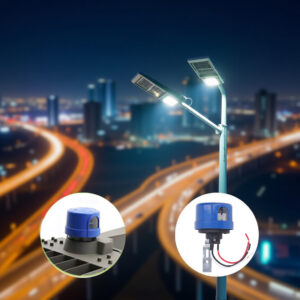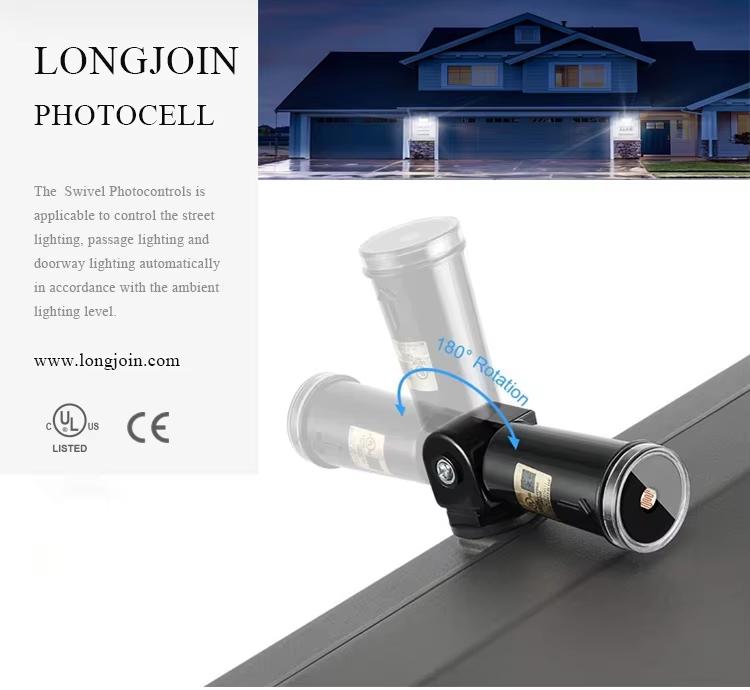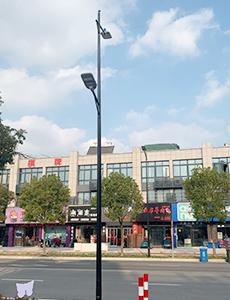Outline
- Introduction
- What Are The Characteristics Of The South American Energy Market?
- What Are The Main Certification Standards For Photocells in South America?
- What Are The Main Certification and Compliance Challenges Of Photocells In South America?
- How To Overcome Challenges of Photocell Compliance In South America?
- Is There Any Potential For Photocells In The South American Market?
- Final Words

The South American market is full of potential for photocell controllers. However, navigating this region isn’t always straightforward. Brazil needs INMETRO. Argentina wants IRAM. And that’s just the beginning. Compliance here isn’t just a checkbox—it’s a technical maze.
But with the right design choices and smart strategies, you can break through. This article unpacks the challenges and gives you a clear path forward in one of the world’s most complex yet promising markets.
What Are The Characteristics Of The South American Energy Market?
Energy Diversity and Green Energy Demand
South America boasts a rich tapestry of energy resources. However, a notable emphasis is on renewables. Hydropower shares 45% in the reigon’s total power production.
Solar and wind energies come second. Chile, for instance, in 2023 has a solar power output capacity of 8.36 GW. It accounts for almost 20% of its country’s total electricity generation. Further, this country aims to produce 70% of its electricity through renewables by the year 2050.
The following statistic shows that the drive towards green energy is not just a matter of available resources. This underscores a regional commitment to sustainable energy transitions.
Import Dependency and Market Environment Analysis
Despite abundant resources, South America’s energy landscape reveals complexities. Here how:
- Brazil, while a leading oil producer, still imports natural gas to satisfy domestic needs. In 2025, its Petrobras is negotiating with U.S. LNG providers for long-term agreements.
- Ecuador’s heavy dependence on hydropower has been challenged by harsh droughts. Construction flaws in major dams have further exacerbated the situation. This reduced output to 30% of potential capacity.
- Colombia wants to diversify its economy away from fossil fuels but has remained unsuccessful. Despite investments in renewables, oil and coal exports continue to be major revenue sources.
The case scenarios above show how South America’s energy sector is marked by a blend of vast renewable potential and intricate dependencies. While strides are being made towards greener energy, a more prudent approach is needed to overcome infrastructural, environmental, and economic challenges.

What Are The Main Certification Standards For Photocells in South America?
Brazil – INMETRO Certification Overview
| Aspect | Details |
| Regulating Body | National Institute of Metrology, Standardization, and Industrial Quality |
| Applicable Standard | INMETRO Ordinance No. 179/2010 |
| Product Scope | Electrical and electronic equipment, including light sensor photocells |
| Accredited Bodies Involved | INMETRO-accredited certification bodies (e.g., TÜV SÜD, JJR Lab) |
| Market Advantage | Legal market access and increased consumer trust |
Argentina – IRAM Certification Overview
| Aspect | Details |
| Regulating Body | Instituto Argentino de Normalización y Certificación |
| Certification Type | S Mark (Type Certification) |
| Challenges for Manufacturers | – Aligning with Argentine-specific standards- Bureaucratic procedures- High testing/certification costs |
| Market Limitation | Certification delays can hinder time-to-market |
Chilean and Peruvian Certifications
These countries follow IEC standards, and thus, light sensors to be sold here should be in compliance with IEC. While this internationally recognized certification makes the compliance easy, make sure there are no additional national requirements like test reports from accredited laboratories.
Certification Needs for Colombia
Smart city projects are on the rise in Colombia, with a cascading effect boosting demand for photocontrollers there. Here too, compliance with IEC standards is a must. However, alongside this, some inter-regional local certifications are a must ot be a part of smart city developments.
What Are The Main Certification and Compliance Challenges Of Photocells In South America?
Non-Uniform Standards
A unified regulatory framework for photocells in the South American region is missing. Each country has distinct certification authorities. INMETRO in Brazil, IRAM in Argentina, and others align partially with IEC standards. This increases production complexity and engineering workload.
Complex Testing Procedures
Local certification bodies often require in-country testing. Lab capacity constraints, especially for niche products like photo controllers, can result in backlogs. For instance, the average time period for IMNETRO is 6-9 months. These delays disrupt go-to-market strategies and increase the cost of compliance.
Environmental Adaptability Requirements
From Brazil’s humid coastal zones to Chile’s dry deserts, South America has a diverse climate. This necessitates additional testing for IP ratings, UV resistance, surge protection, and thermal endurance. Meeting this also uptick costs. So, this becomes a significant barrier, especially for small or mid-size manufacturers.
How To Overcome Challenges of Photocell Compliance In South America?
Technical Optimization
Here’s a concise table for technical optimization of photocell light sensors in the South American market, tailored to regional challenges.
| Parameter | Recommended Specification |
| Voltage Range | 100–277V AC (wide voltage design) |
| Surge Protection | ≥ 6kV / 10kV (L-N, L-G, N-G) |
| Ingress Protection (IP) | IP65 or higher |
| Operating Temperature | -40°C to +70°C |
| UV Resistance | UV-stabilized housing (e.g., PC or ASA materials) |
| Control Logic | Smart algorithms (dimming, delay-on/off, ambient learning) |
| Wireless Compatibility | Optional RF / NB-IoT / LoRa modules |
| Mounting Interface | ANSI C136.41 / Zhaga Book 18 compatible |
How To Enhance Certification Efficiency and Strengthen Local Services?
This will need a strategic approach. Collaborating with local bodies familiar with regional standards can expedite approval processes. For example, DEKRA, accredited for electrical product certification in Colombia, streamlines compliance with local regulations. This will facilitate communication with regulatory authorities, providing timely support to clients, and reinforcing market presence.

Promoting Green Certification
Emphasizing sustainability aligns products with global environmental trends and regional initiatives. Green Seal, such a certification, evaluates energy efficiency and reduced greenhouse gas emissions. This will help lure environmentally conscious consumers and governmental bodies promoting green initiatives.
Is There Any Potential For Photocells In The South American Market?
The straightforward answer is a big YES! However, for some deep insights, look at the pointers below.
- After North America, South America has the highest urbanization rate: currently around 80% and expected to reach 90% by 2050. Against this backdrop, energy efficiency is inevitable. Driven by this, he demand for smart lighting solutions, particularly those incorporating automation like photo sensor systems, is on the rise.
- Countries like Argentina are focusing more on cost-effective operations. While specific data on photocell sensors is limited, the broader trend suggests that it is likely to gain traction.
- Chile and Peru are investing heavily in infrastructure projects. In 2017, with the help of IADB, Chile replaced 81,000 older luminaires with high-efficiency LED technology. The trends for energy efficiency are on perpetual rise, impacting light controller demand.
- Lastly, Colombia is making notable strides toward developing smart cities. It’s 60 cities identified as having the potential to become smart urban centers. These advancements will create a burgeoning market for intelligent lighting solutions like photocell switches.
The above-mentioned pointers are a vital testament that the South American market has a great opportunity and the best time for investment in photocells. For More information, you can contact Chi-Swear.
Final Words
South America’s lighting market offers strong potential but demands strict certification and technical adaptability. For suppliers aiming to scale across the region, balancing performance with local standards is key. Chi-Swear’s proven track record in customized, certified photocell controllers makes them a dependable partner for tapping into this dynamic market.
External Links
- https://www.iea.org/reports/latin-america-energy-outlook-2023/executive-summary
- https://en.wikipedia.org/wiki/Solar_power_in_Chile
- https://www.reuters.com/business/energy/ceraweek-brazils-petrobras-talks-with-us-lng-suppliers-long-term-deal-executive-2025-03-14
- https://www.ft.com/content/059a0657-d508-4c34-a517-57e5cca0ee4c
- https://www.ft.com/content/95be32c9-e292-485c-8103-505c564daf13
- https://en.wikipedia.org/wiki/National_Institute_of_Metrology_Standardization_and_Industrial_Quality
- https://www.iram.org.ar/en/home/
- https://iec.ch/homepage
- https://www.bbvaresearch.com/wp-content/uploads/2017/07/Urbanization-in-Latin-America-BBVA-Research.pdf
- https://www.iadb.org/en/news/iic-promotes-energy-efficient-street-lighting-chilean-municipalities
- https://www.bnamericas.com/en/news/colombia-sees-60-cities-with-potential-to-become-smart






